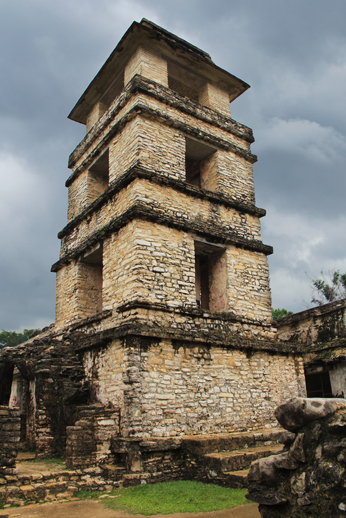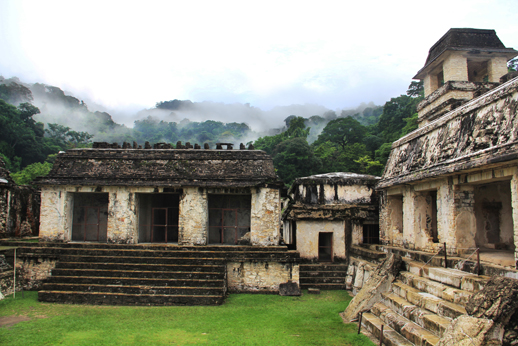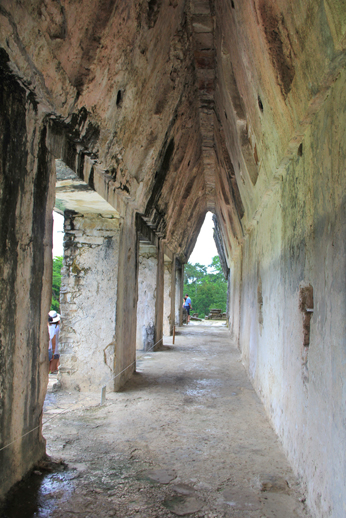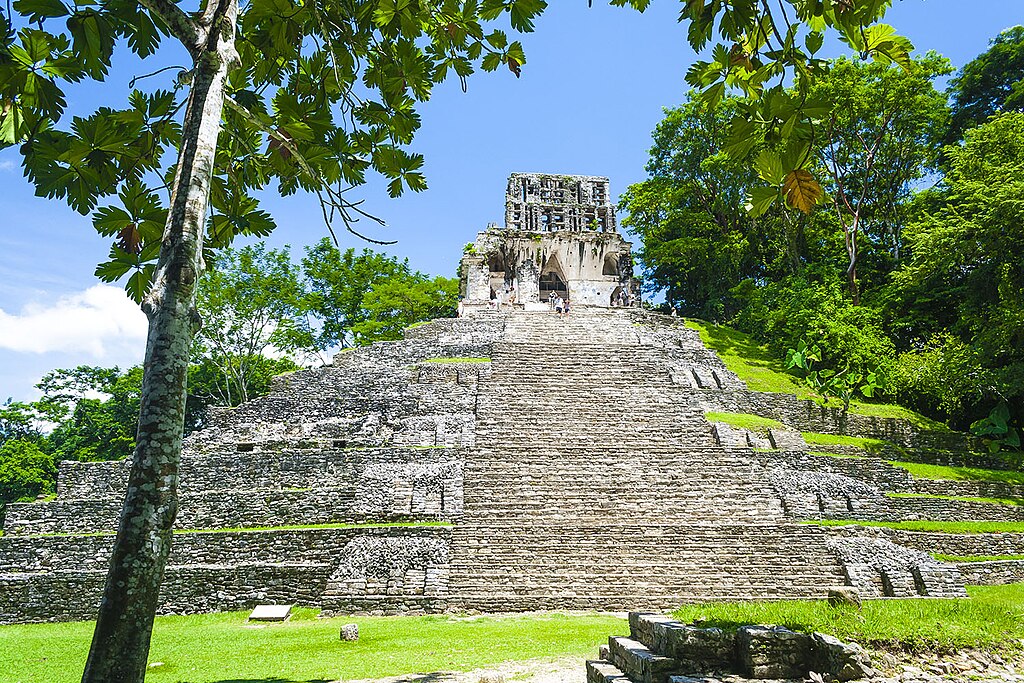
"Palenque (Spanish pronunciation: [pa'leŋke]; Yucatec Maya: Bàakʼ [ɓaːkʼ]), also anciently known as Lakamha (literally: "Big Water"), was a Maya city state in southern Mexico that flourished in the 7th century. The Palenque ruins date from ca. 226 BC to ca. AD 799.[citation needed] After its decline, it was absorbed into the jungle of cedar, mahogany, and sapodilla trees"
https://en.wikipedia.org/wiki/Palenque
visiting Palenque the Mayan ruins, living at Mayabell, a campground
on top of the sites, with the jungle having
grown over so thickly Cortez marched
his army right atop and among
the jaguars and howler monkeys
unbeknownst.
these 3 Swedes whose names
were probably bird songs wrapped in silk
we went day tripping from Mayabell
to visit the blue spray, ferns, and giant toads
later filed as a sequence in the movie Predator.
Was it before or after the jaunt
to the ribbon of mist known as Misil-Ha
that the 4 of us were in my hammock
an enormous hammock i'd just bought in Merida,
el grande familia size
Mayabell the campground a series of huts
with thatched roofs, post and beam
and hammocks slung up between the beams
for $2 or $3 a day, there was a cafe
open day and night
night when the fungi accentuated the sounds
smells and mystic dynamics
of the pre ancient jungle,
always home of the Maya.
i stayed at mayabell, and visited
Palenque, known by other older names,
by day and bought a ticket
and we also went in surreptitiously at night
it was a few hundred yards from Mayabell.
i went down the stone
tunnel stairway down down down,
thousands of tons of stone cocoon


"
The large carved stone sarcophagus lid in the Temple of Inscriptions is a unique piece of Classic Maya art. Iconographically, however, it is closely related to the large wall panels of the temples of the Cross and the Foliated Cross centered on world trees.
Around the edges of the lid is a band with cosmological signs, including those for sun, moon, and star, as well as the heads of six named noblemen of varying rank.
The central image is that of a cruciform world tree. Beneath Pakal is one of the heads of a celestial two-headed serpent viewed frontally.
Both the king and the serpent head on which he seems to rest are framed by the open jaws of a funerary serpent, a common iconographic device for signalling entrance into, or residence in, the realm(s) of the dead.
The king himself wears the attributes of the Tonsured maize god - in particular a turtle ornament on the breast - and is shown in a peculiar posture that may denote rebirth. Interpretation of the lid has raised controversy. Linda Schele saw Pakal falling down the Milky Way into the southern horizon."
https://en.wikipedia.org/wiki/K%CA%BCinich_Janaab%CA%BC_Pakal








No comments:
Post a Comment